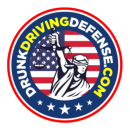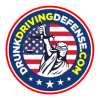DUI Breath Test Machines Explained
To be allowed to tell the jury your DUI breath tests results, the prosecution must first “lay a foundation” to support the introduction of the “numbers” that are to be considered by the jury. The prosecutor must establish that the breath test machine was in good working order, and that it had been used in the manner approved by the State.
One of the most important “science” lessons you need to know if you are facing a breath test (or even a blood test) is how the human body ingests, circulates, and processes alcohol. When you understand that issue better, you can see how a knowledgeable attorney can challenge ANY case involving indirect testing devices that are often purchased or approved for state use due to a LOW BID process.
In the United States, there are fewer than 10 versions of evidential breath testing instruments in use today. This includes various models or “generations” of machines known by the same tradename. For example, the Intoximeter EC-IR has a series I and a series II machine. The Intoxilyzer 5000 has its most recent “EN” version of its 68 series, plus the older generation 68 series, the 66 series, and the 64 series.
One of the devices used in some states (the Draeger) is a German-designed machine and the other nine versions are owned by three American companies. Your knowledgeable DUI-DWI attorney MUST know detailed information on how the machine used in your case operates to have a realistic chance of winning ANY trials that involve a breath test reading that has an alcohol content reading OVER THE PER SE LIMIT.
Your highly trained criminal defense specialist who handles these impaired driving cases will be able to advise you on challenges that can be made in your case, based upon your state’s regulations, your personal health issues, your “contamination or interference” issues, or possible challenges to your state’s shoddy breath testing program.
Police in most jurisdictions are permitted by statutes or regulations to utilize battery-powered fuel cell devices to screen suspected intoxicated drivers at the roadside. The numerical results from these devices usually cannot be admitted into evidence (i.e., put in front of a jury) . In the states that do not allow the “number” to be introduced, most allow the officer to say that the result obtained was “positive” or “negative” for alcohol. These devices are referred to by the acronym “PBT” (preliminary breath tester, or portable breath test).
Other states, (e.g., California and Iowa) allow the number to be admitted as part of the evidence at trial. A few devices that are portable and battery powered also have portable printer connections and capability, so that a printed result can be generated, and (if state law permits) these results be introduced into evidence in your criminal case.
America’s Evidential DUI Breath Test Machines
National Patent Analytical Systems (NPAS) has three primary models of equipment in current use. NPAS is the ONLY manufacturer that opens its doors and its maintenance records for review by criminal defense attorneys, without being forced by a court of law to do so.
CMI, Inc. from Owensboro, Kentucky, makes two versions of the Intoxilyzer. The 8000 is the newer device, and was designed for better portability and dual-wavelength confirmation of alcohol.
In most states, you will have been asked to give two breath “exhalations” within a specified time period on one of these devices. These two results must “agree” (must be close enough to the same number) and be close enough to demonstrate reliability. The printed results MUST be saved and preserved to prove the results for your test; otherwise, all results should be suppressed.
In states that use and save all test results by way of computer database, a lost test card may be replaced by the computer data. For those that do not save results or use a computer, any attempt to introduce the “number” is subject to several constitutional challenges, including confrontation and due process.
In a few states, only one breath exhalation is mandated, and this faulty procedure (“faulty” because the result has not been repeated to show that the initial reading was a reliable reading) is “good enough for government work.” From a scientific reliability standpoint, single analysis of a forensic sample without verification or replication is scientifically deficient. Any college chemistry professor will testify to the inherent scientific lack of reliability of single analysis “forensic” samples.
Issues of “specificity” relating to infrared or fuel cell breath testing devices have been the Achilles heel of many devices. Solvents that are inhaled by way of work-related contamination of workplace air laced with solvents have produced many false results.
Common chemicals (such as toluene) found in many oil-based paints, varnishes, paint thinners, cleaning solvents in auto repair businesses, glues, mineral spirits, stains and similar products can produce false high “readings” on some breath testing devices under certain conditions. Be sure to advise your qualified DUI-DWI defense attorney of any such issues that might relate to your case.
We have had clients with reported exposure from working in the field of floor refinishing, auto body repair, chemical companies (sold small package products after being purchased in bulk) and even cases where common household solvents such as Formula 409™ were used. Most exposure comes from inhalation, versus absorption through the skin. However, both types of absorption are possible with certain volatile chemicals.
The Evolution of DUI Breath Test Machines
DUI Breath test machines have been used since the early 1940s, although the first ones were crude, highly inaccurate pieces of equipment. They were also subject to extreme operator error, if not operated correctly. Robert Borkenstein of Indiana patented the best of the early DUI breath test machines in the early 1950s. The device was called “The Breathalyzer®”, and was still in use in some states up until the late 1990s.
Today, if you submit to a DUI breath test in the United States, you will almost certainly be tested on one of these “infrared” machines (or “instruments”, as police officers are trained to refer to them):
Intoxilyzer® 5000 or 1400 [portable unit for Batmobile use] series (America’s most widely used breath test machine)
BAC Datamaster® (America’s second most common DUI breath machine)
Intoximeter® EC-IR (Used in a handful of states)
Draeger® 7410 (German manufacturer that has placed its machine in about 6 states)
Each of these breath test devices has its strengths and weaknesses, and can be attacked in court by a knowledgeable criminal defense TRIAL attorney specially trained in fighting drunk driving cases. All of them utilize infrared light that passes through a sample chamber (where the breath is passing through) and/or electrically charged “plates” (fuel cell devices) which attract and “count” ions of alcohol as their “measuring” tool. Like any “machine”, all breath test machines are subject to variance, from systematic error, random causes, or mere sampling variability common to all breath testing devices.
All Dui Breath Test Results Can Be Successfully Challenged!
Regardless of whether the breath test result claimed by the state is close to the state’s legal limit (e.g., a 0.083 result in a state having a legal limit of 0.080) or double the maximum limit for you state, a deeply-trained DUI trial attorney may be able to find a viable explanation for why the breath machine’s results cannot be trusted.
Breath Test Machines Can Give False Readings
In the late 1990s, the State of Alabama’s own “state lab” conducted experiments on the Intoxilyzer® 5000 devices then in use across that state. Their findings, basically showing that substantial error (plus or minus 25%) in the “readings” could falsely accuse a driver who had an elevated breath temperature, led to Alabama abandoning the Intoxilyzer® 5000, and installing the new German machine by Draeger® which measures the breath temperature and adjusts the reading downward when the body temperature is higher than normal. Other states have also dropped the Intoxilyzer® (or Breathalyzer®) in favor of the Draeger® machine, or the EC-IR®. We even have an entire article on how to beat a breathalyzer.
Breath Tests Machines May Become Obsolete
States continue to use DUIN breath testing because it’s easy, inexpensive and FAST. This gets police officers back out on the highways to look for more “drunk drivers”. Finding the best DUI attorney who is trained to attack the breath machine’s limitations and weaknesses is the first priority if you decide to fight your DUI/DWI case in court. Helping you find the right DUI lawyer with these skills was the primary reason for starting DrunkDrivingDefense.com. Every lawyer asked to join this premier DUI attorney directory has been screened for tenacious trial skills and a reputation as a “courtroom fighter” for decades.
More Breathalyzer & DUI Breath Test Resources
If you’d like to learn more about breathalyzers and DUI breath tests, take a look at some of our other in-depth articles on the subject below:
- How Do I Blow Into a Breathalyzer?
- Can I Talk With My Attorney Before I Take a Breath Alcohol Test?
- How to Beat a DUI Breath Test
- Can Breathalyzer Results Be Challenged?
- Faulty Breath Machines and Missing Police Evidence
- Can I Get a DUI If I Refuse A Breathalyzer Test?
- DUI Breath Test Instruments (1995)
- Federal DUI Breath Test Devices Calibrating Regs (1997)
- Federal Conforming Alcohol Screening Devices (2001)

